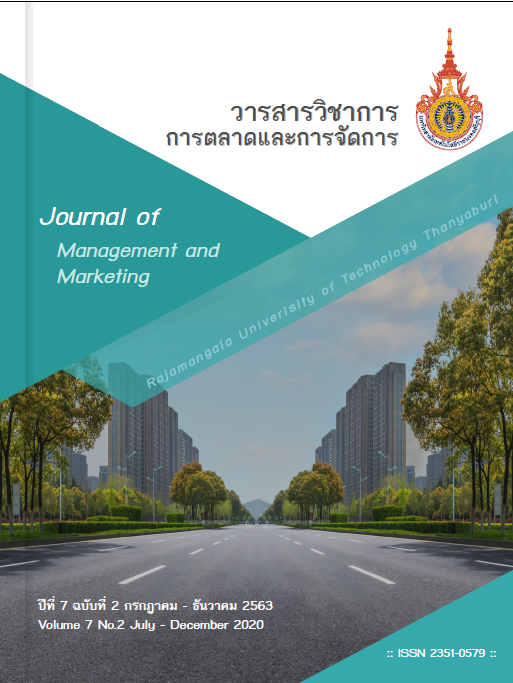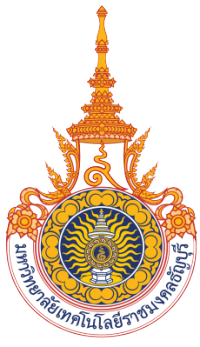อิทธิพลของภาพลักษณ์การท่องเที่ยว และการรับรู้ความปลอดภัย แหล่งท่องเที่ยว ที่ส่งผลต่อความตั้งใจกลับมาเที่ยวซ้ำของนักท่องเที่ยว ในจังหวัดเมืองรองกลุ่มภาคเหนือตอนบน
คำสำคัญ:
เมืองรอง, ท่องเที่ยว, ภาพลักษณ์การท่องเที่ยว, การรับรู้ความปลอดภัยแหล่งท่องเที่ยว, ความตั้งใจกลับมาเที่ยวซ้ำบทคัดย่อ
บทความนี้มุ่งทดสอบอิทธิพลของภาพลักษณ์การท่องเที่ยว และการรับรู้ความปลอดภัยแหล่งท่องเที่ยวที่ส่งผลต่อความตั้งใจกลับมาเที่ยวซ้ำของนักท่องเที่ยวในจังหวัดเมืองรองกลุ่มภาคเหนือตอนบน กลุ่มตัวอย่างคือ นักท่องเที่ยวชาวไทยที่เคยมาเยือนจังหวัดเมืองรองกลุ่มภาคเหนือตอนบนจำนวน 600 ราย แบบสอบถามถูกนำมาใช้ในการรวบรวมข้อมูล การวิเคราะห์สมการโมเดลโครงสร้างถูกนำมาใช้เพื่อการทดสอบสมมุติฐานการวิจัย ผลการวิจัยพบว่าภาพลักษณ์การท่องเที่ยว และการรับรู้ความปลอดภัยแหล่งท่องเที่ยวที่มีอิทธิพลต่อความตั้งใจกลับมาเที่ยวซ้ำของนักท่องเที่ยวในจังหวัดเมืองรองกลุ่มภาคเหนือตอนบน แบบจำลองมีความสอดคล้องกับข้อมูลเชิงประจักษ์โดยพบ Chi-square = 44.549, df = 41, p-value = 0.325, RMSEA = 0.015, RMR = 0.019, GFI = 0.982, AGFI = 0.966, CFI = 0.996 ผลจากการวิจัยนี้ได้สร้างความเข้าใจต่อบทบาทของภาพลักษณ์การท่องเที่ยว และการรับรู้ความปลอดภัยแหล่งท่องเที่ยวที่ส่งผลต่อความตั้งใจกลับมาเที่ยวซ้ำของนักท่องเที่ยวซึ่งจะช่วยวางแผนเชิงนโยบายต่อการท่องเที่ยวเมืองรองในจังหวัดภาคเหนือตอนบนให้มีความต่อเนื่องและมีการพัฒนาให้มีความได้เปรียบต่อไป
เอกสารอ้างอิง
กระทรวงการท่องเที่ยวและกีฬา. (2561). สถิตินักท่องเที่ยว. สืบค้นจากhttps://www.mots.go.th/ old/more_news.php?cid=411. สืบค้นเมื่อ 11 เมษายน พ.ศ. 2562
การท่องเที่ยวแห่งประเทศไทย. (2561). แผนปฏิบัติงาน ประจำปี 2561. สืบค้นจาก https://www.tat.or.th/th
การท่องเที่ยวแห่งประเทศไทย. (2562). แผนปฏิบัติงาน ประจำปี 2562. สืบค้นจาก https://www.tat.or.th/th
ชนิกานต์ หนูทองคำ และนาถรพี ชัยมงคล. (2561). การสื่อสารการตลาดในรูปแบบสื่อสังคมออนไลน์ กับความคาดหวังของนักท่องเที่ยวที่มีอิทธิพลต่อการตัดสินใจเลือกใช้บริการรีสอร์ทเพื่อสุขภาพ (RETREAT) ในจังหวัดกระบี่. วารสารวิชาการการตลาดและการจัดการ, 6(2), 16-32.
บุศรา ธาราเกษม และ พรทิพย์ สัมปัตตะวนิช. (2562). รูปแบบการดำเนินชีวิต การแสวงหาข้อมูล และพฤติกรรมการท่องเที่ยวเมืองรองของกลุ่มเจเนอเรชั่นวาย. วารสารการสื่อสารและการจัดการ นิด้า, 5(3), 1-14.
พงศ์ศิริ คำขันแก้ว, สุกฤษฎิ์ ลิมโพธิ์ทอง, ดาริณี ตัณฑวิเชฐ และศิริพันธ์ จุรีมาศ. (2560). อิทธิพลของ ความมีอิสระในงานและการรับรู้ความสามารถในตนเองที่มีต่อความผูกพันต่องานของ พนักงาน: กรณีศึกษาในโรงเรียนนานาชาติอังกฤษ แห่งภาคเหนือ. วารสารวิชาการการตลาดและการจัดการ, 4(2), 59-69.
สำนักงานปลัดกระทรวงการท่องเที่ยวและกีฬา. (2560). แผนพัฒนาการท่องเที่ยว ฉบับที่ 2 (2560-2564). สืบค้นจาก https://www.mots.go.th/ewtadmin/ewt/mots_web57/download/article/article_20170320150102.pdf
Battino, S. (2013). The Image Perceived by the Tourists Visiting Sardinia. First Considerations from a Questionnaire-Based Survey. Cuadernos de Turismo, (32), 301–302.
Cardona, A. R., Sun, Q., Li, F., & White, D. (2017). Assessing the Effect of Personal Cultural Orientation on Brand Equity and Revisit Intention: Exploring Destination Branding in Latin America. Journal of Global Marketing, 30(5), 282–296.
Chang, C., Hsu, S., & McAleer, M. (2019). Asymmetric risk impacts of Chinese tourists to Taiwan. International Journal of Tourism Research, 21(5), 718-734.
Chen, Z. (2019). A qualitative pilot study exploring tourists’ pre- and post-trip perceptions on the destination image of Macau. Journal of Travel & Tourism Marketing, 36(3), 330-344.
Donaldson, R., & Ferreria, S. (2009). (Re-) creating urban destination image: Opinions of foreign visitors to South Africa on safety and security. Urban Forum, 20, 1-8.
Emami, A., & Ranjbarian, B. (2019). The Perceived Risk of Iran as a Tourism Destination (A Mixed Method Approach). Iranian Journal of Management Studies, 12(1), 45-67.
Farrell, A. M., & Rudd, J. M. (2009). Factor analysis and discriminant validity: a brief review of some practical issues. In D. Tojib (Ed.), ANZMAC 2009 conference proceedings ANZMAC. Retrieved from https://publications.aston.ac.uk/id/eprint/7644/1/factor_analysis_ANZMAC_2009.pdf
Fishbein, M., & Ajzen, I. (1977). Attitude-behavior relations: A theoretical analysis and review of empirical research. Psychological Bulletin, 84(5), 888-918.
Fuchs, G., & Reichel, A. (2006). Tourist Destination Risk Perception: The Case of Israel. Journal of Hospitality & Leisure Marketing, 14(2), 83-108.
Gefen Zhou, Yan Liu, Wenkuan Chen, & Qizhi Yang. (2020). Relationship between Triggers of Nostalgia and Revisit Intention in Rural Tourism. Revista Argentina de Clínica Psicológica, 29(1), 536-545.
Hasan, M. K., Ismail, A. R., Islam, M. F., & Tiu Wright, L. (2017). Tourist risk perceptions and revisit intention: A critical review of literature. Cogent Business & Management, 4(1), 1-21.
Huang, S. S. (2007). The effects of motivation, past experience, perceived constraint, and attitude on tourist revisit intention. (Ph.D. Dissertation, Hong Kong Polytechnic University).
Isa, S. M., Ariyanto, H. H., & Kiumarsi, S. (2020). The effect of place attachment on visitors’ revisit intentions: evidence from Batam. Tourism Geographies, 22(1), 51-82.
Jandala, C., & Hercz, Á. (2015). The Role of the Gastronomy in the Tourism Image of a Destination. International Journal of Business Insights & Transformation, 9(1), 18-23.
Jeng, C.-R., Snyder, A. T., & Chen, C.-F. (2019). Importance–performance analysis as a strategic tool for tourism marketers: The case of Taiwan’s Destination Image. Tourism & Hospitality Research, 19(1), 112-125.
Karl, M. (2018). Risk and Uncertainty in Travel Decision-Making: Tourist and Destination Perspective. Journal of Travel Research, 57(1), 129-146.
Kim, M. J., Jung, T., Kim, W. G., & Fountoulaki, P. (2015). Factors affecting British revisit intention to Crete, Greece: high vs. low spending tourists. Tourism Geographies, 17(5), 815-841.
Kline, R., B. (2005). Principles and Practice of Structural Equation Modeling. New York : The Guilford Press.
Ku, E. C. S., & Chen, C.-D. (2015). Cultivating travellers’ revisit intention to e-tourism service: the moderating effect of website interactivity. Behaviour & Information Technology, 34(5), 465-478.
Kuan-Chou Chen, Dogan Gursoy, Ka Lai Kelly Lau. (2018) Longitudinal impacts of a recurring sport event on local residents with different level of event involvement. Tourism Management Perspectives, 28, 228-238.
Li, F., Wen, J.b & Ying, T. (2018). The influence of crisis on tourists’ perceived destination image and revisit intention: An exploratory study of Chinese tourists to North Korea. Journal of Destination Marketing and Management, 9, 104-111.
Lian, T., & Yu, C. (2019). Impacts of online images of a tourist destination on tourist travel decision. Tourism Geographies, 21(4), 635-664.
Liu, M. & Brock, J., Shi, G., Chu, R., & Tseng, T. (2013). perceived risk, and trust: Influences on consumers' group buying behavior. Asia Pacific Journal of Marketing and Logistics, 25(2), 225–248.
Loureiro, S. M. C., & Jesus, S. (2019). How perceived risk and animosity towards a destination may influence destination image and intention to revisit: the case of Rio de Janeiro. Anatolia: An International Journal of Tourism & Hospitality Research, 30(4), 497-512.
Lu, C., Yeh, W., & Chen, B. (2016). The study of international students’ behavior intention for leisure participation: Using perceived risk as a moderator. Journal of Quality Assurance in Hospitality & Tourism, 17(2), 224-236.
Marinkovic, V., Dimitrovski, D., & Senic, V. (2017). Going for gold as a leisure tourism continuum: clustering motivations for gold panning revisit intention. Leisure Studies, 36(6), 764–777.
Millar, M., Collins, M. D., & Jones, D. L. (2017). Exploring the Relationship between Destination Image, Aggressive Street Behavior, and Tourist Safety. Journal of Hospitality Marketing & Management, 26(7), 735-751.
Ping, R. A. (2007). Is there any way to improve average variance extracted in a latent variable? Retrieved from http://home.at.net/Brpingjr/LowAVE.doc.
Rattanaprichavej, N. (2019). An Interaction of Architectural Design and Perceived Value toward Revisit intention in Artificially Built Attractions. Real Estate Management & Valuation, 27(3), 69-80.
Tabachnick, B., G. & Fidell, L., S. (2007). Using Multivariates Statistics. Boston: Allyn and Bacon.
Thammadee, N., & Intravisit, A. (2018). The Effects of Travel Motivation, Satisfaction, and Attitude on Revisit Intention: A Case Study of East Asian Tourists in Thailand. Business Review Journal, 7(1), 243-262.
Xi Zhong. (2015). A Study on the Relationship of Religious Tourist Motivation, Tourism Image, Satisfaction and Loyalty - a Case Study of Tourists Visiting Jing’an Temple, China. UTCC International Journal of Business & Economics, 7(1), 95-110.
Yaowapa Pathomsirikul. (2019). Marketing Strategies Affecting Chinese Tourists’ Decision Making and Loyalty toward Medical and Wellness Tourism in Thailand. UTCC International Journal of Business & Economics, 11(2), 37-52.
Youcheng Chen, Wenqi Liu, Ziqiang Li, Yongqiang Ma, & Shuisheng Fan. (2020). Relationship between Tourist Perceived Image of Leisure Agriculture and the Tourist Behavioral Intention. Revista Argentina de Clínica Psicológica, 29(1), 399-408.
Zaid Alrawadieh, Ziad Alrawadieh, Metin Kozak. (2019) Exploring the impact of tourist harassment on destination image, tourist expenditure, and destination loyalty. Tourism Management 73, 13-20.
ดาวน์โหลด
เผยแพร่แล้ว
รูปแบบการอ้างอิง
ฉบับ
ประเภทบทความ
สัญญาอนุญาต

อนุญาตภายใต้เงื่อนไข Creative Commons Attribution-NonCommercial-NoDerivatives 4.0 International License.
บทความที่ได้รับการตีพิมพ์เป็นลิขสิทธิ์ของ ผู้นิพนธ์
ข้อความที่ปรากฏในบทความแต่ละเรื่องในวารสารวิชาการเล่มนี้เป็นความคิดเห็นส่วนตัวของผู้เขียนแต่ละท่านไม่เกี่ยวข้องกับมหาวิทยาลัยเทคโนโลยีราชมงคลธัญบุรี และคณาจารย์ท่านอื่น ในมหาวิทยาลัยฯ แต่อย่างใด ความรับผิดชอบองค์ประกอบทั้งหมดของบทความแต่ละเรื่องเป็นของผู้เขียนแต่ละท่าน หากมีความผิดพลาดใดๆ ผู้เขียนแต่ละท่านจะรับผิดชอบบทความของตนเองแต่ผู้เดียว









